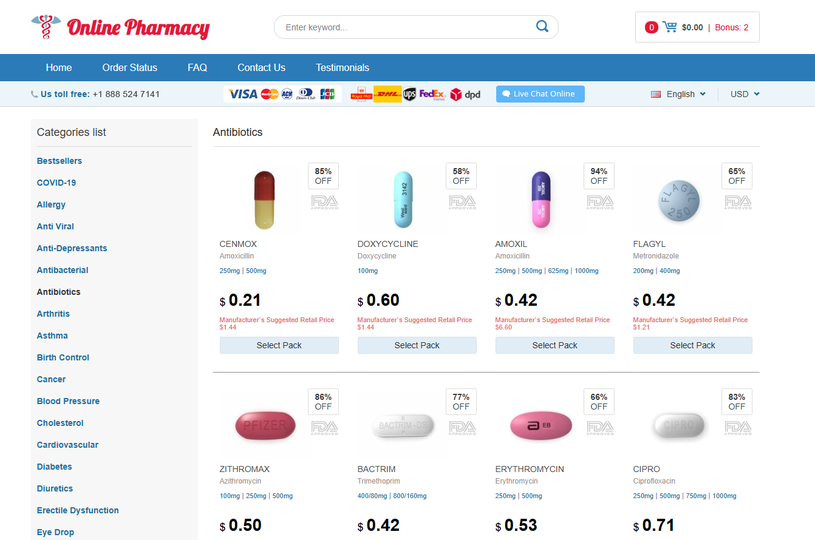To Order Amoxil US Online Visit Our Pharmacy ↓

Prevention of Antibiotic Resistance
Its palatable formulation and tolerability in children meant that bacterial infections such as otitis media, pneumonia, and streptococcal pharyngitis, which commonly afflicted the pediatric population, could now be treated more humanely and effectively. Amoxil, also known as amoxicillin, was first introduced in 1972 as a semi-synthetic penicillin antibiotic. This momentous breakthrough occurred in the early 1970s when scientists at the pharmaceutical company Beecham Research Laboratories, which later merged into GlaxoSmithKline, developed the drug. Overall, the future of Amoxil looks promising, with advancements and research focusing on improving its efficacy, safety, and convenience of use. In addition, ongoing research aims to expand the spectrum of infections that can be effectively treated with Amoxil. One important consideration is the patient's allergies or hypersensitivity to Amoxil or other antibiotics. Common side effects include gastrointestinal upset, such as nausea, vomiting, or diarrhea, which are sometimes mistaken for a different illness.
Combining Amoxil Treatment with Other Remedies for Skin Infections
Even if symptoms improve or disappear before the medication is finished, the bacteria causing the infection may not be completely eradicated. Below is a brief summary presented in table format:. These resources offer evidence-based insights that can help you navigate the complexities of antibiotic therapy and make informed decisions about your health. It is essential for expecting mothers to be aware of these considerations when deciding whether or not to use Amoxil during pregnancy. As such, it is often a first-line treatment option for infections such as strep throat, pneumonia, and sinusitis. In the years that followed, other antibiotics were discovered, including streptomycin, tetracycline, and erythromycin. You should also avoid this medication if you have had a previous allergic reaction to it or other penicillin antibiotics.
Skin Rash and Itching
It belongs to the penicillin group of antibiotics and works by stopping the growth of bacteria. This precision ensures that the antibiotic is effective while minimizing potential harm. However, red rashes quickly covered her body, and she found it hard to breathe. Additionally, avoiding allergens and pollutants, quitting smoking, and managing your stress levels can reduce your risk of developing a sinus infection. Determining the appropriate dosage of Amoxil (amoxicillin) for pregnant women requires careful consideration. Amoxil is effective against a broad range of bacteria, including those responsible for respiratory, urinary, and skin infections. In such cases, discontinuing the medication under a doctor’s guidance and seeking emergency care is vital.
The Science of Antibiotic Resistance and Amoxil's Role
Common adverse reactions include gastrointestinal issues such as nausea, vomiting, and diarrhea. You can also try taking an over-the-counter antacid, such as Tums, to help ease nausea. Amoxil is a widely used antibiotic known for its effectiveness against bacterial infections. The dosage for Amoxil varies depending on the child's body weight and the severity of the infection being treated. Amoxil can have different effects on different parts of your body. Proper administration of Amoxil is crucial for effective treatment. Its broad-spectrum efficacy is further expanded by its ability to be absorbed rapidly and extensively in the gastrointestinal tract, leading to high plasma concentrations that boost its effectiveness.
Common Misconceptions about Penicillin Allergies
The exploration of Amoxil's hidden benefits in immune boosting represents a significant shift in our understanding of this medication's potential applications. When it comes to choosing the right antibiotic for your condition, there are several factors to consider. Each antibiotic, including Amoxil, works differently to combat bacterial infections. Introduction to Both Medications: Amoxil and Augmentin are both antibiotics used to treat various bacterial infections, including sinus infections. These advancements have greatly improved the accessibility and effectiveness of Amoxil, making it an essential antibiotic medication in today's modern world. Some of the most common side effects of Amoxil include diarrhea, nausea, vomiting, rashes, and stomach pains. First, always take Amoxil as prescribed by your healthcare provider.
Alternatives to Amoxil in Dental Procedures
Ongoing alcohol use can also impair liver function, making it less efficient at metabolizing medications like Amoxil. Types of Sinus Infections: There are different types of sinus infections, including acute sinusitis, chronic sinusitis, and recurrent sinusitis. Consider the type of infection: Different infections require different dosages of Amoxil. As we delve deeper into the future of Amoxil, it is evident that its impact will continue to be significant. Researchers have discovered that Amoxil can enhance the body's immune response, inhibit tumor growth, and even sensitize cancer cells to other anti-cancer drugs. Amoxil is a powerful antibiotic that can be used to treat a variety of bacterial infections, including skin infections. Amoxicillin, a common antibiotic used to treat a variety of bacterial infections, can sometimes cause allergic reactions ranging from mild to severe.
Conclusion and Recommendations
If an allergic reaction to Amoxil occurs, immediate action is crucial. Amoxil, brandished as a formidable fighter in the antibiotic realm, stands out for its unparalleled ability to combat a wide array of bacterial infections 🦠🛡️. However, like any medication, it can have potential side effects. Its versatility lies in its ability to target both gram-positive and gram-negative bacteria, making it effective against a wide range of pathogens. In the oral cavity, it can combat dental abscesses, whilst in the ear, middle ear infections are another area where Amoxil proves its mettle. It is important to consult with your doctor to determine if these alternative antibiotics are appropriate for your condition and medical history. The spectrum of activity provided by Amoxil allows it to play a crucial role in the management and treatment of various bacterial infections.
How Amoxil Works to Fight Infections
First and foremost, continue consuming a diet rich in fiber, fruits, and vegetables, as these foods support your gut microbiome. Initially reserved for more affluent nations, the manufacturing of generic versions catapulted its presence into developing countries, thereby playing a crucial role in global health initiatives. In this article, we will compare Amoxil to other antibiotics and assess how they compare in terms of effectiveness, side effects, and future advancements in antibiotic therapy. However, not every adverse reaction is immune-mediated. Occassionally, taking time for relaxation techniques such as meditation or yoga can make a notable difference in your overall well-being. It is essential to consult a healthcare professional who will determine the appropriate dosage based on these factors. Amoxil, being a broad-spectrum antibiotic, is effective against various types of bacterial infections, such as sinusitis, pneumonia, urinary tract infections, and more.
Recommended Dosage of Amoxil for Different Ages
This precaution helps to minimize the risk of adverse reactions and interactions, ensuring a safer treatment course with Amoxil. In most cases, mild diarrhea can be managed with lifestyle modifications. One of the main ways that Amoxil works is by targeting bacteria and preventing them from reproducing. Researchers, driven by the desire to enhance efficacy, tinkered with the molecular structure, leading to synthetic modifications and, eventually, amoxicillin. For most adults and children over 40 kg, the typical dose for mild to moderate infections is 250 to 500 mg every 8 hours, or 500 to 875 mg every 12 hours. Amoxil, a widely used antibiotic, fundamentally disrupts bacterial growth by targeting bacterial cell walls. Amoxil works by inhibiting the growth of bacteria by preventing the formation of their cell walls.
Understanding Correct Dosage Instructions
Amoxil, also known as amoxicillin, is an antibiotic widely used to treat various bacterial infections. For mild to moderate infections, a lower dosage of 20 to 40 mg/kg divided into two or three equal doses per day may be prescribed. It is crucial to consult with your healthcare provider before starting an Amoxil regimen to ensure there are no conflicting factors. As with any medication, it is important to weigh the benefits against the risks before starting Amoxil treatment. A healthcare professional has the expertise and knowledge to evaluate your medical history, symptoms, and other relevant factors to recommend the most suitable dosage. If you miss a dose, take it as soon as possible. Among the most common are gastrointestinal disturbances, such as nausea, vomiting, and diarrhea, which occur as the medication disrupts the natural balance of gut flora.


